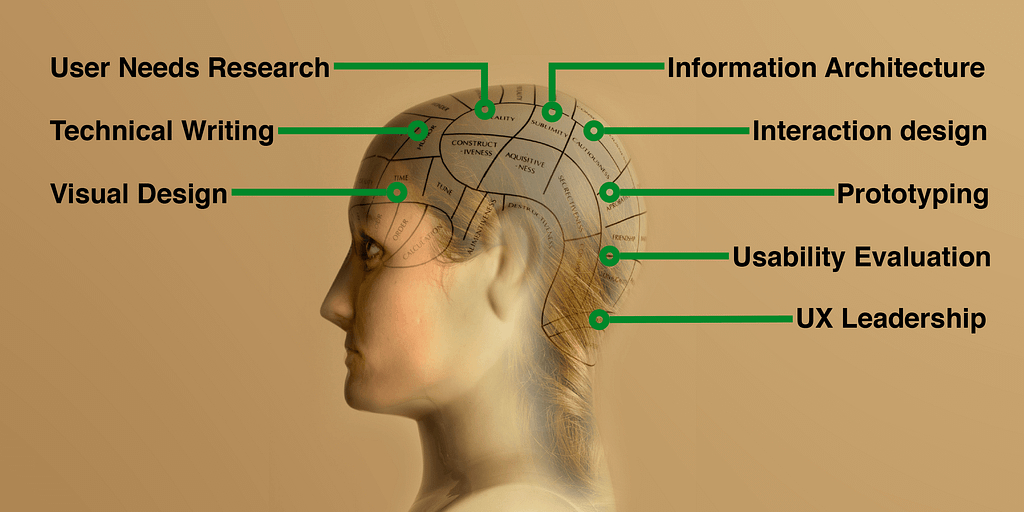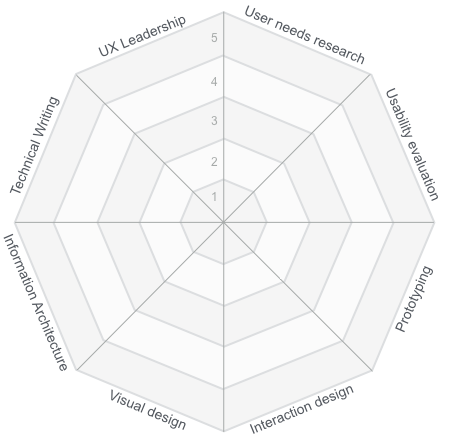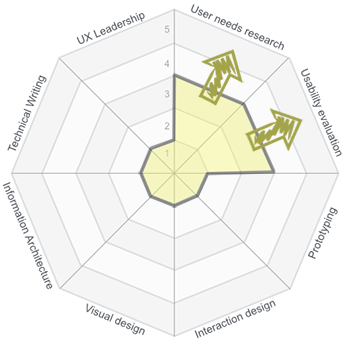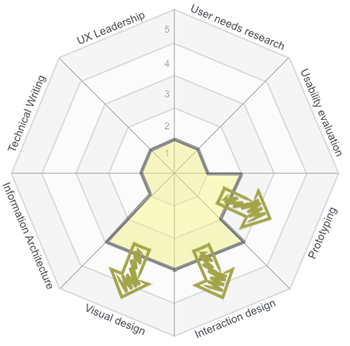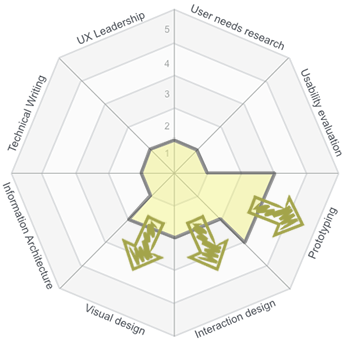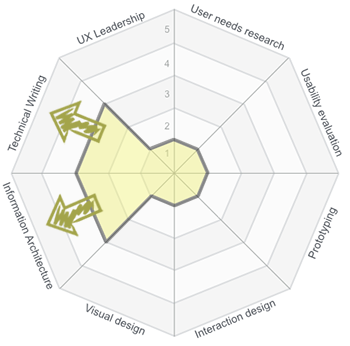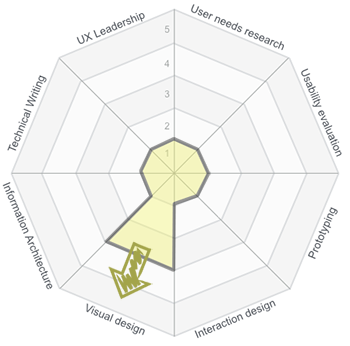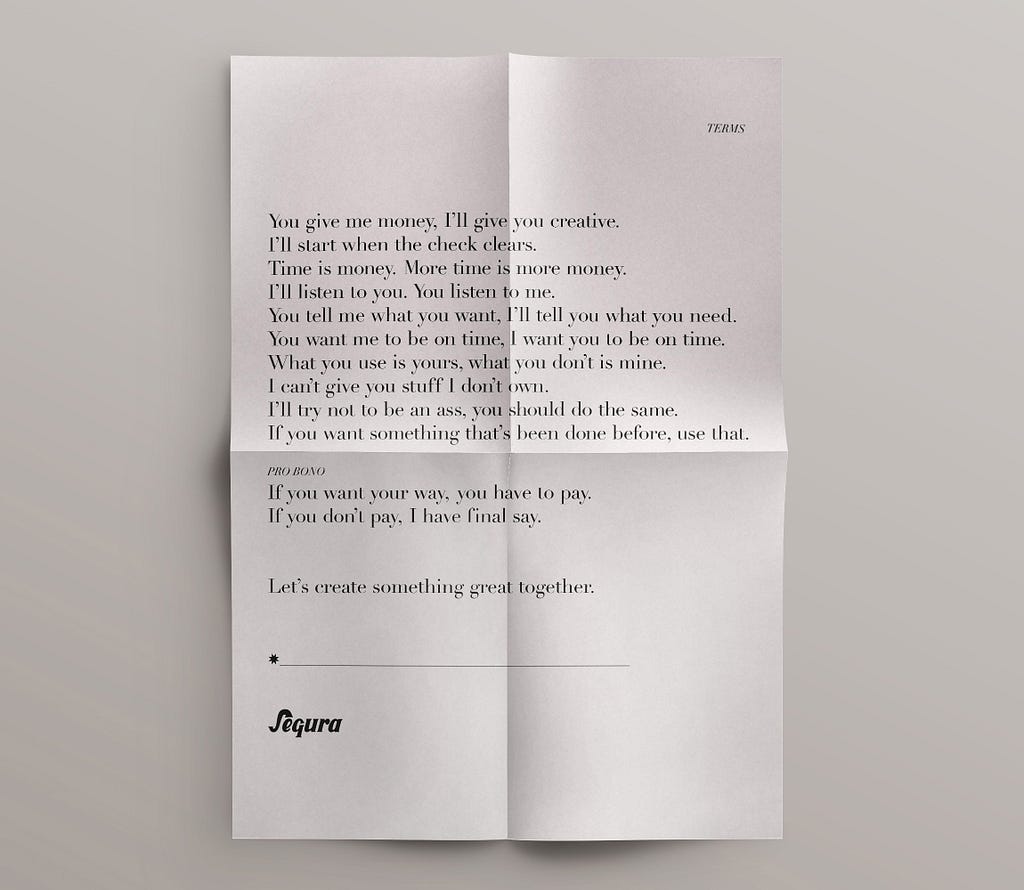Just like Google’s become ubiquitous in our everyday lives — and a popular verb in our language — its influence on best practices in the tech industry is enormous. Nearly 20 years after its founding, the company has literally shaped a generation of tech professionals. To an even greater extent, it’s molded product managers to build high-quality consumer products at scale.
In many ways, this is a great thing. Together, Google and Facebook (and their brethren Amazon, Uber, Snapchat, Twitter, Dropbox…) have produced product leaders who’ve changed global conversations about how to innovate, how to assemble happy teams, how to test, iterate and learn. But according to Ogi Kavazovic, CMO and SVP Product Strategy at Flatiron Health, this powerful tide has left a crucial gap in its wake: All of these PMs — now spread across dozens of tech companies — while skilled at building consumer-facing products, are coming up short when they apply the same strategies to build winning enterprise software.
In this exclusive interview, Kavazovic identifies the two most common ways B2B product orgs get stuck, and how to get them back on track. He also makes a compelling case for enterprise software PMs to let go of what they’ve been taught to build more successful teams.
The Problem
Simply stated: Too many product leaders attempt to develop enterprise software using a consumer app playbook.
In Kavazovic’s experience, when product managers leave the consumer sphere for a B2B role, they bring their well-worn tactics and hit the ground running. The trouble is, the product development cycles and customer relationships they encounter are fundamentally different. There are two common — and potentially debilitating — ways things can go wrong:
1. Falling in love with agile at the expense of a clear product vision.
“These days, agile is essentially the law of the land if you’re in product management or engineering,” says Kavazovic. But the resulting emphasis on sprints and short-term planning can lead to a lack of a larger product vision. It’s also often incompatible with the longer planning cycles of enterprise customers and partners.
When customer-facing teams bump up against an agile product org, that incompatibility can quickly turn into friction. “A sales reps may say to a PM, ‘Hey my customer is asking what we’re doing with the product over the next year or so?’ And the PM will likely say something like, ‘Oh, we’re not sure yet, we’re agile’ — usually paired with a hint of disdain in their voice.” Product-focused teams are trained to think in one to three month chunks. They value agility and optionality, and avoid anything that sounds like a long-term commitment at all costs.
The downside of this agile orthodoxy is that its short-term focus can make it very difficult for the sales and BD teams to close that next big 5-year deal or key strategic partnership.
“It becomes a point of tension in B2B companies really quickly,” says Kavazovic. More often than not, that tension is temporarily resolved when sales or marketing draws up hasty, if well-intentioned, pictures of where the product could be going.”
That seems like an okay fix in the short term, but if you let this happen over an extended period of time, marketing artifacts can become the de facto product vision, and a dynamic forms where the product management team is wondering who’s actually setting the product direction. Are they? Or are the sales and marketing and BD teams?
Kavazovic recalls working with a talented product lead who’d come to his prior company, Opower, from Google. “He was great and came in with a lot of best practices from his prior role: He implemented OKRs for the first time, and people loved it. He talked about the product manager being the CEO of the product and led the organization from a technology-driven place.” His impact on team motivation was fast and positive. Be he also brought another value from his B2C background — in order to protect the product organization and remain agile, he limited the “committed roadmap” to six months (and anything past three months out, even, was a pretty loose commitment).
When Opower got their next RFP from a large customer, the lack of a longer-term product vision quickly became a real issue. “It was a big deal event in the industry — a 5-year deal with one of the biggest utilities in the country. The customer was planning a rollout of 18 to 24 months in the future.” Naturally, they had questions about what functionality they could expect two or three years down the road — and Opower’s sales and marketing teams were caught flat-footed. “It was a last-minute scramble, we really needed to win this deal,” says Kavazovic. The team spent 10 crazed days shaping a product plan that would fit that customer’s needs.
In the end, it was a happy outcome. The deal was signed. “But it was definitely one of those cases where, for the subsequent two years, we were locked into a half-baked product vision that really came together over the course of a handful of days, and some very late nights. It was a bitter-sweet moment. We all wished we had more time to do the proper research needed to create a longer-term vision that we were all more confident in.”
2. Focusing on user research at the expense of better understanding market dynamics.
The other way B2B product management can go off the rails is forgetting, in most cases, that the user is not the buyer.
This might sound blasphemous to a B2C product manager. Of course the user should be top of mind. And they’re right — in the consumer space, if users love your product, you’re on the right track. “If Google Maps is great and everybody wants to use it, that equals success,” says Kavazovic.
In the B2B world, though, users may not have much of a voice when it comes to a buying decision. A department VP may be the buyer, but it’s the team working for her who’ll actually be using the product. When you’re selling to a business, you need to understand every factor that goes into its purchasing decisions — and it’s quite possible that how delightful a product is to use won’t be anywhere near the top of that list. Therefore, you need to listen — not to the voice of the user but — as Kavazovic calls it, the voice of the market.
Heeding the voice of the market requires looking at all the broader forces — what your competition is pitching, upcoming regulations, as well as the ambitions and needs of your biggest and most important customers (current and prospective).
“All of these things need to be fully considered in order to make the right product strategy decisions,” says Kavazovic. “And that’s quite a bit of work.” While there are plenty of industry-standard B2C best practices for how to do user research, he’s found a void when it comes to baking various market forces into your roadmap. As a result, product teams either stick to what they know — well-run focus groups and user research — but stumble through an ad hoc approach incorporating all the market dynamics that will likely influence a buyer’s decision.
Often, the result is a rude awakening when the sales team gets into the field. “We thought we were doing great at Opower — the current customers were happy and we were confident we had the best product in the market from a user experience perspective,” says Kavazovic. “Then out of nowhere we lost the next three deals — a new competitor backed by a well-known Silicon Valley billionaire interested in cleantech entered the game. We soon found out they were winning because they pitched a grander platform vision about where the market was going and where the product may need to be years from now, complete with very convincing mocks and demos. We started seeing customers partnering with a company whose product didn’t even exist.
In the B2B world, you can have great underlying tech and a superior user experience, but still lose badly to a competitor selling ‘the future.’
The Solution
Bridging this gap between B2C training and B2B needs is about one thing: adopting a hybrid approach to strategic planning.
In Kavazovic’s experience, the two pitfalls described above boil down to a key misunderstanding: agile development and longer-term planning are NOT actually the mutually exclusive modus operandi the tech world has portrayed them to be.
There’s a quote that’s stuck with him, from someone who doesn’t pop up on TechCrunch too often: Dwight Eisenhower. “He said, ‘Plans are useless, but planning is indispensable.’ It occurred to me when I read that for the first time that this tension between staying agile and strategic planning is something the military has been dealing with for generations.”
Eisenhower knew that any plan crafted before battle would be obsolete at first contact with the enemy. In his work, Kavazovic wants to be this realistic too. “Translating this into tech: no long-term plan or product vision survives contact with the user in the product-design sense. That’s why agile methodology is specifically designed to create user experiences that work,” he says. “It’s absolutely suboptimal to design a particular product all the way down to years’ worth of features, make that the blueprint, and build it out.” Inevitably, sticking to a rigid long-term plan without a mechanism to iterate on user feedback would result in features users don’t want, costly re-dos and potentially total product failure.
But there’s still a vital difference between consumer and enterprise sales: Selling to users vs. selling to buyers.
“Agile is really good for making sure that you create a successful user experience. But it’s important to separate that from the overall product roadmap, which requires meeting the needs of your buyer.” The key is to take a two-pronged approach: 1) articulate a long-term product vision, but 2) establish a culture of flexibility when it comes to the details.
“If you’re a B2B product manager, you now have two deliverables. One is a high-level roadmap — I think a healthy timeline is between 18 to 24 months,” says Kavazovic. “That document is sometimes called the ‘vision roadmap,’ and includes big, directional boulders. It should be exciting! Importantly, it comes with hi-fi mocks — something that can be used to bring it to life, to galvanize the troops internally — especially engineering — to stay ahead of a competitor pitching vaporware, and to compel a strategic buyer or a partner that you’re the right long-term choice. The benefits are manifold.”
For day-to-day execution, you’ll also need a shorter-term, development roadmap. “This one is the real brass tacks. It’s your next one to three months, broken down by feature, and spelling out the committed, ‘shovel ready’ plan that the engineers will execute on.”
By bifurcating the process, you arrive at two guiding artifacts, each with its own purpose and process:
The Long-term Plan & Roadmap
At a startup (no matter how big), the whole company needs to be bought into and feel ownership of this overarching vision, so it should be the product of cross-functional teamwork. Opower’s process was months long and carefully formalized: Every department had a representative on the strategic planning team for a given product, ranging from the executive team to customer support to BD — and of course product management and marketing.
Together, the cross-functional group produces two artifacts: “One is what is sometimes called the market requirements document — that’s the voice of the market. At Flatiron, this is everything from what our salespeople are hearing, to the analysis our product marketing team has done, to what the accounts people are learning from their customers,” says Kavazovic. “A ton of market intelligence can bubble up from within a company if you take the time to do it.”
From there, the market requirements document goes to the product leadership to determine what’s feasible and compatible with the technology stack as it stands. “Meshing those two things together is a judgment call by the product leads, and is a bit of an art, but the result is a well-baked draft of a product vision.”
Still, they’re not done yet. This vision roadmap then undergoes no fewer than two rounds of review and feedback, first by the leadership team and then by the entire company. “This seems like a lot of work, and it is. But the benefit of casting a wide net, of getting everybody’s input in a very methodical way, is that — by the time you come out on the other end — you have a product vision and a strategy that everybody understands and finds exciting and motivating,” says Kavazovic.
The Development Roadmap
“This one is pretty much entirely the purview of product managers and engineers,” he says. “They do the hard work of disaggregating and figuring out, based on a whole slew of factors, which set of features are the most optimal to build next and how you’re going to get it done.”
At Opower, there was a week-long planning process every quarter led by tech leads and PMs to map out the next few iterations with their scrum teams. The development roadmap lived in engineering-oriented systems like JIRA, accompanied by a more accessible, higher-level document published to the rest of the company.
At Flatiron, the team named this deliverable the “transparent roadmap,” and its purpose is to guide the operations of various other functions. This includes informing key customers who may be waiting for a particular feature, giving the marketing team new content for an upcoming campaign, or allowing the customer success team to inform existing customers of upcoming product changes. It’s also an important check-in against progress on the overall strategy and product vision.”
These two documents are obviously linked, but importantly, they’re distinct. “Over time, after you get through three or four of your shorter-term development roadmaps, you should find yourself on your way to realizing the 2-year vision,” says Kavazovic. “At Opower, we found — contrary to some anti-long-term planning rhetoric out there — that we were able to deliver better than 80% of the functionality in the original vision with lower than a 20% error margin on estimated time and budget.” The key is to leave enough flexibility in your product vision to accommodate inevitable shifts and feature-level scope adjustments as you work out the details of your development roadmap.
Communicate, internally and to customers, that your vision roadmap is directional.
“I’ve found that most customers are very receptive to things changing over time, even when they work at a stodgy company like a 100-year-old, extremely risk-averse electric utility,” he says. “They intuitively get that a lot of the details may change over 18 months.”
Give Your Customers the Benefit of the Doubt
Many startups are, understandably, apprehensive about sharing what they (supposedly) have in store for a year or two out, even in broad strokes. After all, what if a customer gets attached to a feature from a mock-up that never comes to fruition? What if you change your minds? Isn’t it safer to say nothing at all?
“Actually, the opposite is true, I’ve found,” says Kavazovic. “The majority of customers totally get that things change, that priorities may change. More importantly, they understand that we may discover better solutions.”
If this kind of transparency is uncomfortable, he suggests a couple of paradigm shifts that will set you up for productive customer-facing interactions:
-
It’s never too early to hear what your customers think.
Ideally, your product marketing organization starts serving as the customer’s proxy during the strategic planning phase. “Usually they take the lead in documenting what the customer wants to see,” says Kavazovic. “They weigh what your big customers want, what the competition is doing, and so on. It’s a heavy lift, but when you deliver a quality market requirements document, a lot of that should be baked in.”
Once you have a roadmap you feel good about, be open and share it with a broader set of customers. See what resonates. Revisit what doesn’t. You won’t let the air out of your plans. Instead, you’ll make sure you have a winning strategy. “Even better, you may be able to get some customers to sign up before it’s built — this can be very positive for your cashflow if you’re a startup, and perhaps more importantly, it can help you pre-empt a competitor.”
-
Customer education never ends. As you move through the long-term roadmap, you may deviate from a development or feature that a customer has come to expect. When you do, by all means explain that — and teach them why the new approach is better.
Kavazovic recalls one incident at Opower, when a customer had grown quite attached to a spinning pie chart feature that was highlighted prominently in a demo of their product vision. “They kept asking our account team when it was coming.” But the UX team decided to scrap it based on “really, really bad” user testing.
“UX was very nervous about presenting this — they were our biggest customer. But they did an incredible job preparing the deck, which featured all the recent research they’d done. That meeting was one of the most successful, slam-dunk client meetings I’ve ever been in,” he says. “The customer was not upset, and on the contrary, was floored by the level of research and the data that we brought to the table. We candidly explained what we’d learned through our agile process, and we described how we got from our original plan to where we ended up — and why that was much more aligned with what their users wanted. They forgot all about the spinning pie chart in less than an hour.”
At the end of the day, your customers care most about achieving their business objectives. So stay focused on their business case — that’s where alignment is really necessary.
Turn Planning Into a High-Performance Team Sport
At Flatiron, Kavazovic and his colleagues took the democratic aspect of cross-functional strategic planning pretty far. “Each of those cross-functional teams met to come up with what they thought the strategy should be for their particular product line, an 18-month vision that they then presented to the leadership team. We decided to live broadcast all of the presentations to the entire company,” he says.
This was a somewhat controversial idea. But come presentation day, Flatiron’s 80-person conference room was packed with over 100 employees — with many more dialed in online. From 8 a.m. to 6 p.m., presentations took place and voices from across the company chimed in on each team’s strategic vision.
“The feedback that day was overwhelmingly positive,” says Kavazovic. “For the people who were presenting, it was great visibility, and an important opportunity to get the company excited about what they were working on.” While some members of the leadership team had initially feared this would be an unruly free-for-all, it turned into a forcing function for the company’s best thinking.
The benefits of including your team in vision building are multiplicative. The people building your product feel engaged with their work, and the people talking about it can do so with confidence and authority.
Moreover, rallying everyone around strategy becomes a great equalizer. “Once a company gets to a certain size, the most important management challenge becomes ensuring that all those people are rowing in the same direction,” Kavazovic says. “When you include everybody in this high-level planning and product vision process, you all know what you’re moving toward and can get to work immediately.”
from First Round Review http://firstround.com/review/dear-pms-its-time-to-rethink-agile-at-enterprise-startups/?utm_medium=rss&utm_source=frr_feed&utm_campaign=home_stream&utm_content=RSSLink










